You notice white spots on your zucchini leaves. A few days later, it's spreading. Then the whole plant looks like a powdered donut. You have powdery mildew. Or more specifically, your squash plant has it. And your zucchini. And maybe your roses, peas, and every other poor sap in your garden.
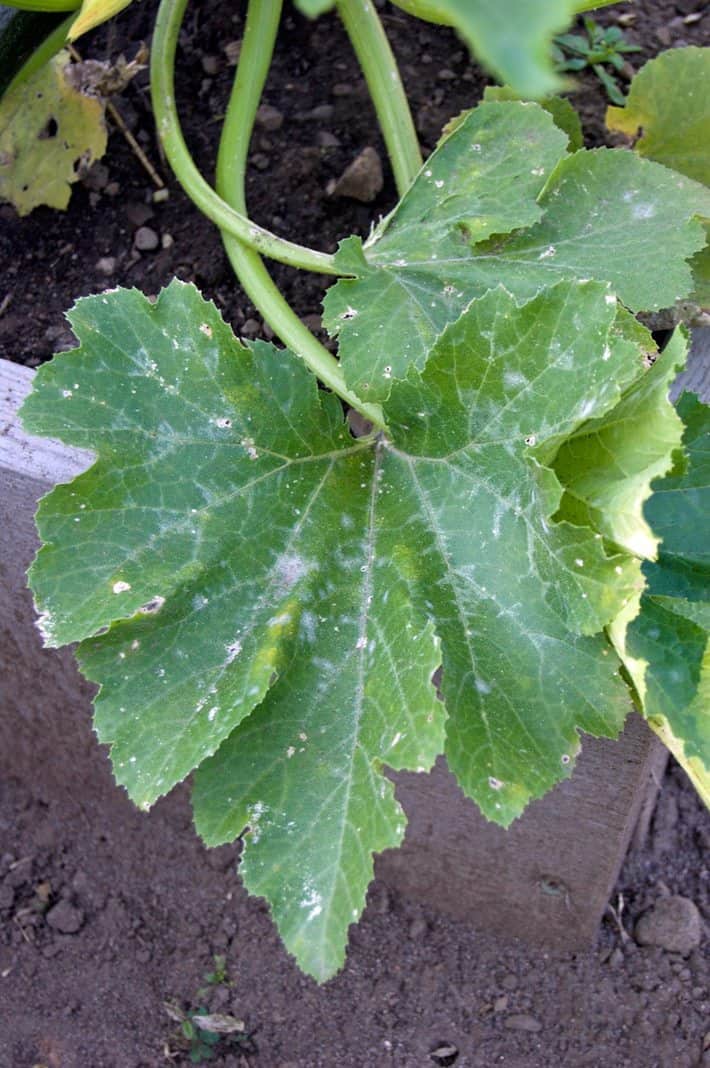
Shouting and swearing is probably your first response when you see any disease on your plant's leaves but that isn't going to do anything to stop the problem.
Shouting and swearing will help get rid of an unwanted cat in your garden or spouse in your bed but it ain't gonna do anything to get rid of powdery mildew.
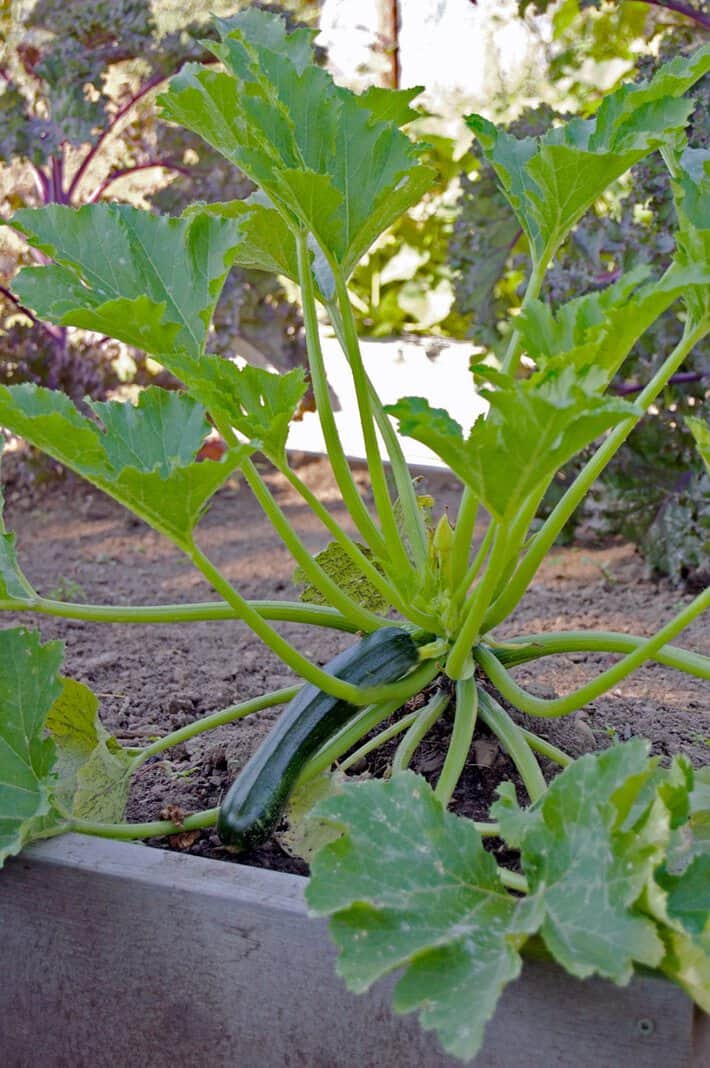
It's not just zucchini that's susceptible - a whole slew of plants and flowers can be killed by powdery mildew. And even though you THINK it's caused by wet weather - it isn't.
Table of Contents
🍃 What is Powdery Mildew?
There are actually all different types of powdery mildew that affect different plants. Cucurbits have their own type, phlox its own and so on.
It's caused by different fungi spores that make their way to your plants through the air and from splashing up from the soil when it rains.
The fungi alone isn't harmful, but once it gets onto your plants it germinates and starts feeding by sucking nutrients from the surface of the plant leaves. That's why the leaves from a plant with powdery mildew eventually start turning yellow, crispy and die. They've had all the nutrients sucked out of them.
Powdery Mildew likes low light and temperatures from 20°- 30°C (68°- 86°F) with high humidity (over 95%.) However when the temperature gets above 32°C (90°C) some of the spores die. So it likes hot weather but slightly hotter than hot weather will kill it.
Unlike most mold and mildew that you think of, powdery mildew actually thrives in DRY conditions. It doesn't like or reproduce well when wet.
Humidity makes powdery mildew worse but heavy rain or soaking with a hose makes it better!
🙅♀️ How to Prevent Powdery Mildew
So now that you know the conditions that powdery mildew likes, try your best to avoid those. How?
- Don't crowd your plants. Plants that are close together will have a higher humidity and lower light. These are idea conditions for stupid, stupid mildew spores.
- Keep your plants from being shaded. Shade = happy powdery mildew spores.
- Clean up ALL plant debris at the end of the year to prevent spores from overwintering in your garden. At the end of the season remove your infected plants and any dead leaf debris around them, put them in a plastic bag and take them right out of the garden to the dump.
- Ideally, get rid of any stakes or string you may have used as well that could be holding onto the spores. But I mean, you're never actually going to get rid of the spores. They're everywhere. So I'd personally just keep using the same stakes and string.
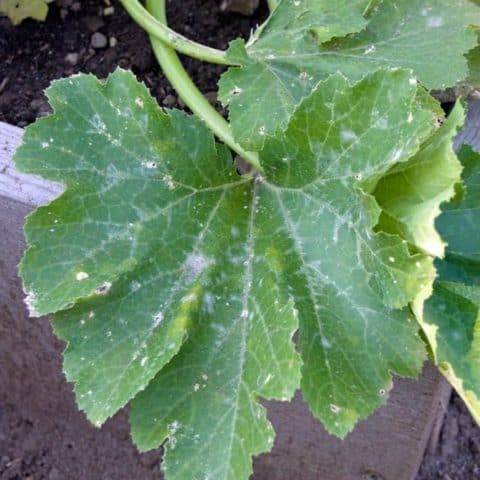
Powdery Mildew Treatment
A simple mixture of water and vinegar won't cure powdery mildew but it will keep it in check.
Materials
- Spray bottle
- Vinegar
- Water
Instructions
- Mix together 4 cups of water + ½ Tablespoon of Vinegar in a spray bottle.
- Spray the top and bottom of all the plant's leaves once a week.
Notes
This really does work. I'm not speaking anecdotally. All my gardening techniques and tips are 100% tested and experienced by me in my own garden.
Why it works:
The reason behind the effectiveness of this spray is pretty simple. Powdery mildew can’t grow in wet conditions, so when you spray the leaves with water you’re creating a cruddy environment for them to grow in plus washing some of them literally off of the leaf.
The vinegar alters the pH of the water and spore that it hits which it also hates.
These two things combined are what stop the powdery mildew in its tracks.
🌿 Plants Most Affected by Powdery Mildew
Powdery mildew doesn't just show up on squash and zucchini. It can show up on vegetables, fruit, flowers - even trees.
If you're seeing mildew across your garden, here are the usual targets:
🥒 Fruit & Vegetable Plants
🌼 Ornamental Plants & Flowers
- Zucchini
- Cucumbers
- Squash
- Pumpkins
- Melons
- Peas
- Beans
- Lettuce
- Parsley
- Tomatoes
- Potatoes
- Peppers
- Fruit trees
- Grapes
- Phlox
- Lilacs
- Roses
- Sunflowers
- Zinnias
- Peonies
- Begonias
- Dahlias
Since jumping up and down and screaming doesn't work to treat powdery mildew you're going to have to mix up a potion to spray on the leaves. Like a witch. Or a Cher. Cher seems like a potion maker.
Because the disease only affects the very surface of the leaves, a foliar spray treatment works really well.
✨ How to Get Rid of Powdery Mildew (That Actually Works)
Would you like to save this stuff?
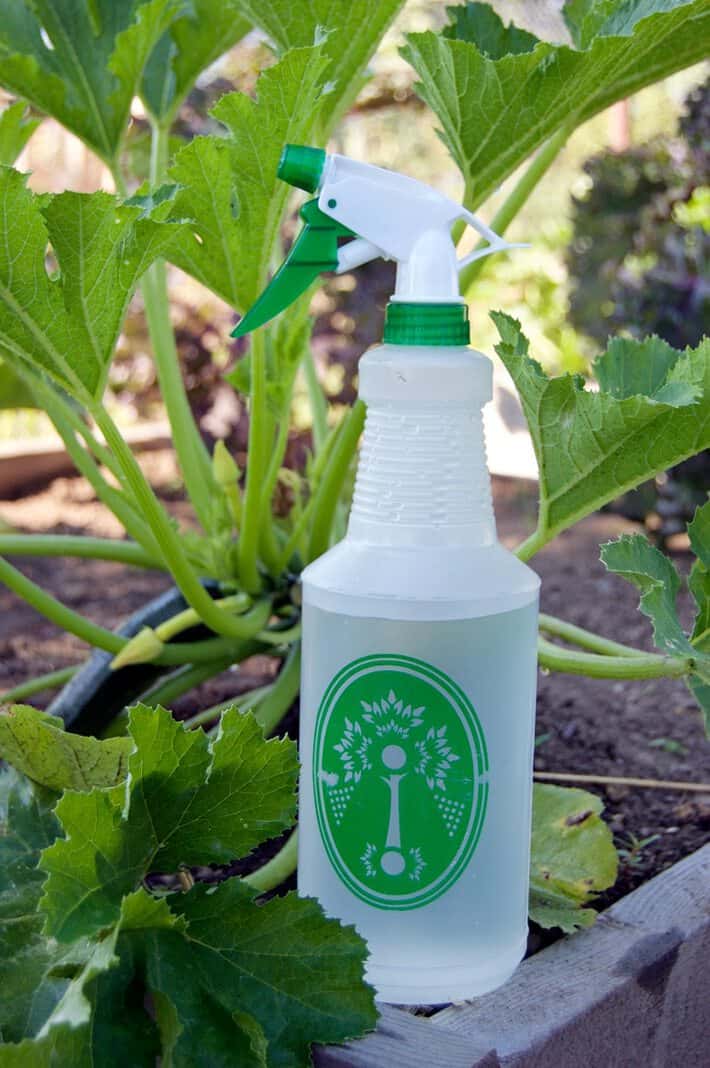
🚿 Powdery Mildew Treatments
This, by the way, would be a great time to use the battery operated spray nozzle I talk about.
Vinegar Spray
- 4 cups of water + ½ Tablespoon of vinegar
- Spray the top and bottom of leaves once a week
- Store spray bottle in the garden for easy reuse
Milk Spray
- 60% water + 40% milk (or whey)
- Spray the top and underside of leaves once a week
- Must be mixed fresh for each use (milk goes gross in the sun)
Why These Work
Powdery mildew can't grow in wet conditions. When you spray the leaves, you're making the surface hostile and washing spores away. Vinegar also lowers the pH slightly, which the spores hate.
Milk has preventative qualities too, but unless you enjoy the smell of warm curdled dairy, you'll want to use it immediately and not let it sit around in a bottle.
I use the vinegar solution because it's easy, effective, and garden-bottle-friendly.
It takes one minute to spray an entire zucchini plant. That's less time than you spend cursing at your zucchini plant because it produces so many zucchini you've started to force yourself to eat zucchini cereal every morning.
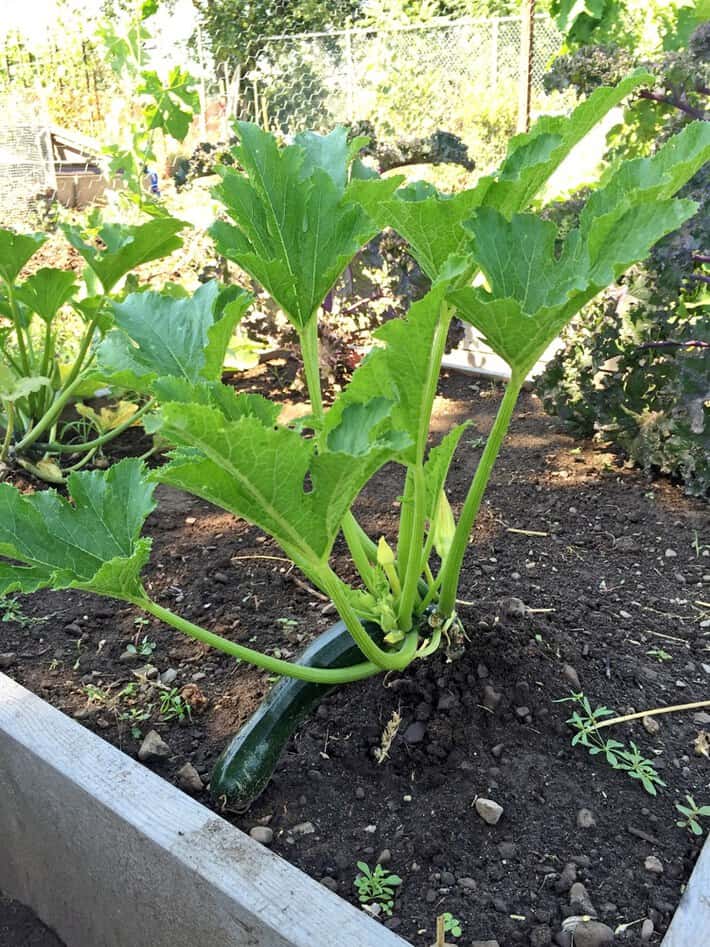
Zucchini Pruning & Staking
Keeping zucchini healthy means doing two things: removing the lower leaves and staking the plant. You can read my whole guide to growing zucchini where I explain pinching and staking a zucchini plant in more detail but this is the gist of it.
Why Prune?
- Any leaves below the first fruit can be removed, even if they look healthy.
- These lower leaves aren't doing anything helpful. In fact, they often end up with powdery mildew.
- Removing them improves air circulation and reduces disease spread.
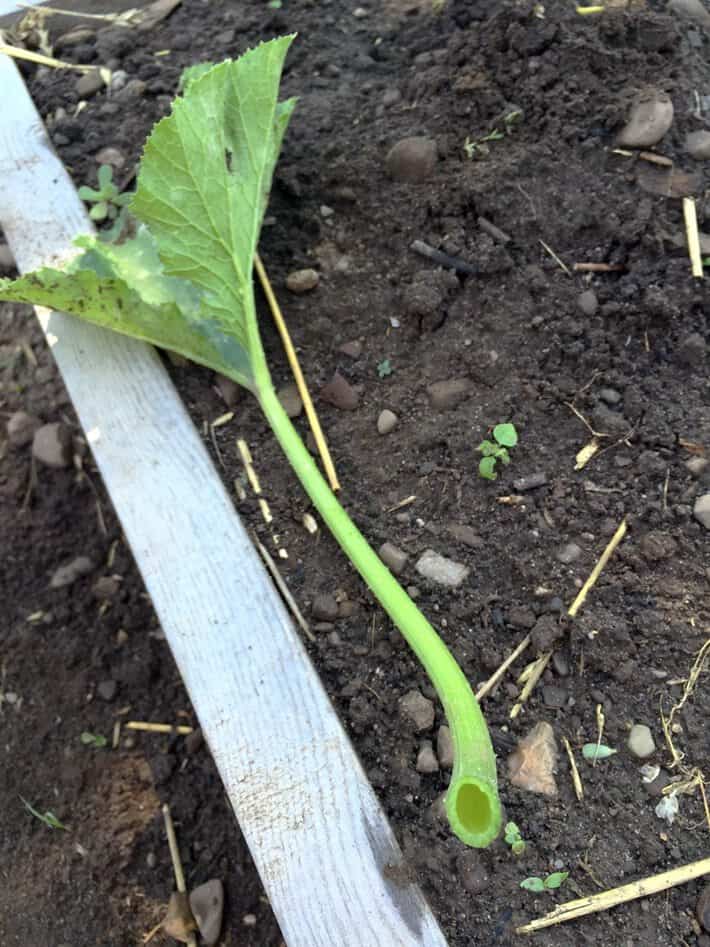
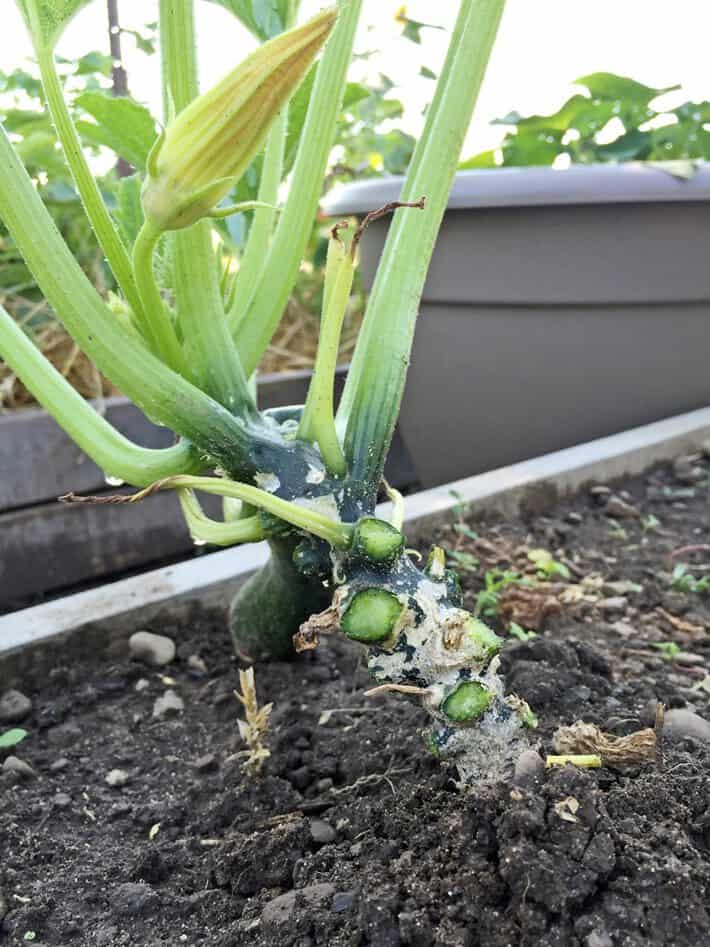
How to Prune
- Use sharp scissors or a knife.
- Cut leaf stems as close to the base of the plant as possible.
- Zucchini leaf stems are hollow. Cutting them mid-stem leaves them prone to rot or disease.
Why Stake?
- Staking keeps the plant upright and improves airflow, which mildew hates.
- It also keeps leaves off the soil (where spores splash up).
- I didn't stake in the photos here, but I do now. Here's how I stake zucchini like a tomato plant.
Do these things - the potion, the staking and the pruning - and you'll be picking all summer.

Now of course, if your plant is getting powdery mildew but you're already so sick of zucchini that the thought of them is making you gaggy, you should go with your original inclination of shouting and swearing at the plant.
The plant'll be dead from powdery mildew within a couple of weeks and you'll be able to move on to shouting and swearing at your tomatoes.
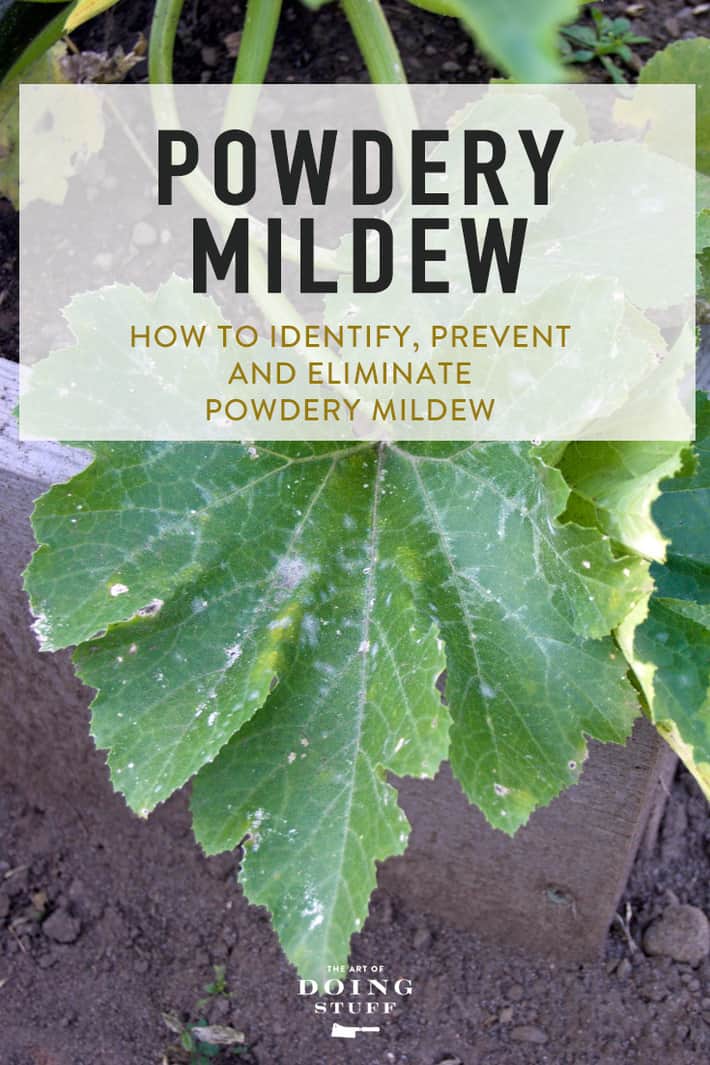

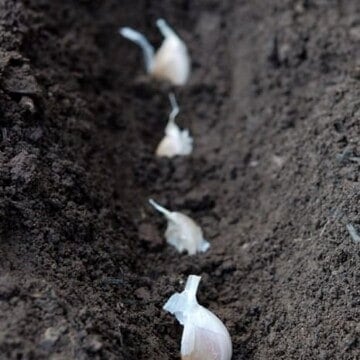

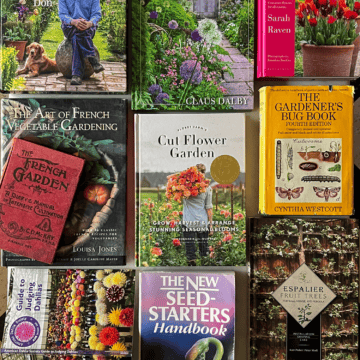
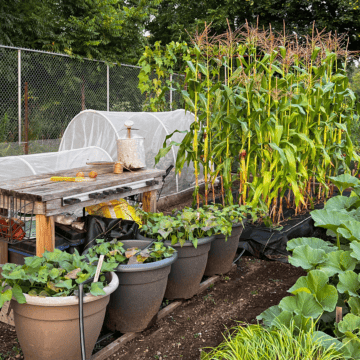
Terry Rutherford
I don’t see any squash bugs on your plants! Oh right, it’s because every squash bug in Ontario is on my pumpkins and squash and gourds. It’s nightmarish, and vomitous, seeing every phase of their incarnation on one plant. I realize I should have covered them as soon as I planted them. Hindsight. I got busy. Sigh. I don’t suppose you have a spray for them? Too much to hope for.
Keep up the wonderful work you do in cheering us up. No Snacks or Philip update?
Karen
I think Neem Oil will help with squash bugs. I *just* discovered a whack of them on a zucchini plant last night. ~ karen!
Hettie
Thanks so much, Karen! I will be chopping off all extra leaves as soon as the rain stops and the garden is dry again. You are as amusing as you are useful. Very on both counts!
Lez
Would this work for Black spot on roses too, or better just to cut them off? I see one follower suggested Tea tree oil, what do you think? They are destroying my roses!
Karen
Hi Lez. This is different than a black spot treatment. My treatment for black spot was to let the roses die an undignified death and then not replace them. I fought it for years and now only grow an heirloom variety rose that's completely resistant to it. ~ karen!
Mary
Zucchini cereal.
Ha!
Chris
Grape powdery mildew - who knew! I started an orchard/arbour of four plants in 2021. I was super happy with their growth this year until I found all the small and white fruit. I’ve read about baking soda treatment also. Have you tried that and found vinegar better?